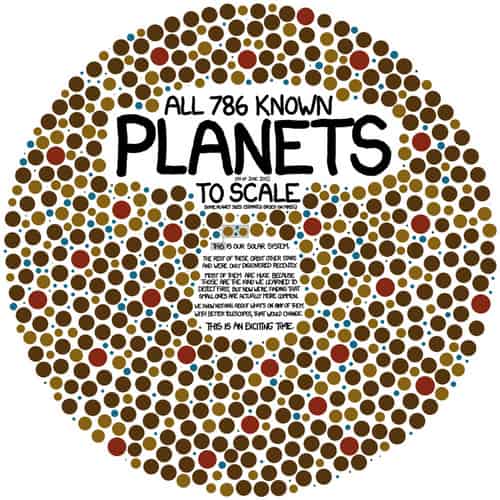
An artist’s impression of the Tau Boötis system. (Courtesy: ESO/L Calçada)
By Tushna Commissariat
It seems as if no sooner have I finished writing about exoplanets, then there is some more interesting news from the field and I am back at it.
Following last week’s story on the cosiest exoplanet system, today an international team of astronomers has used the European Southern Observatory’s Very Large Telescope (VLT) to carry out a detailed study of the atmosphere of a large “hot Jupiter” exoplanet. Specifically, it is a non-transiting exoplanet – one that does not pass across the face of its parent star.
Transiting is one of the methods researchers use to look for exoplanets – by searching for small dips in a star’s light-curve that occur when a planet crosses its face during a “transit”. But using this method means we can only find planets that transit their stars from the point of view of Earth. Another method, the radial-velocity method, looks for changes in the radial velocity of the star – tiny shifts that occur because of the gravitational pull of a planet orbiting it. But this method does not give us any information about the planet’s atmosphere, as no spectrum is seen. Hot Jupiters are a class of exoplanets with masses that are close to or more that the mass of Jupiter. They tend to orbit close to their parent stars and are easily detected.
Now, astronomers have managed to directly capture the faint glow from one of the first detected exoplanets, Tau Boötis b, and have both studied its atmosphere and measured its orbit and mass precisely for the first time – in the process solving a 15-year-old problem. Surprisingly, the team also finds that the planet’s atmosphere seems to be cooler higher up, the opposite of what was expected. Tau Boötis b is one of the closest known exoplanets and was previously only detected using radial-velocity measurements of the system, so the atmosphere was unknown.
The team used the CRIRES instrument on the VLT and high-resolution spectroscopy results, combined with specialized algorithms that ignore the host star’s much stronger signal, to tease out the weak signal of the planet.
The team also probed the planet’s atmosphere and measured the amount of carbon monoxide present, as well as the temperature at different altitudes by means of a comparison between the observations and theoretical models. Surprisingly, the researchers found that the planet has an atmosphere with a temperature that decreases higher up, contrary to other hot Jupiters, which show “temperature inversion” – an increase in temperature with height.
The results prove that high-resolution spectroscopy from ground-based telescopes can be very useful for the detailed analysis of the atmospheres of non-transiting exoplanets. In the future, the detection of different molecules will allow astronomers to learn more about the planet’s atmospheric conditions. By making measurements along the planet’s orbit, astronomers may even be able to track atmospheric changes between the planet’s morning and evening.
The paper on the new work will be published in Nature.



